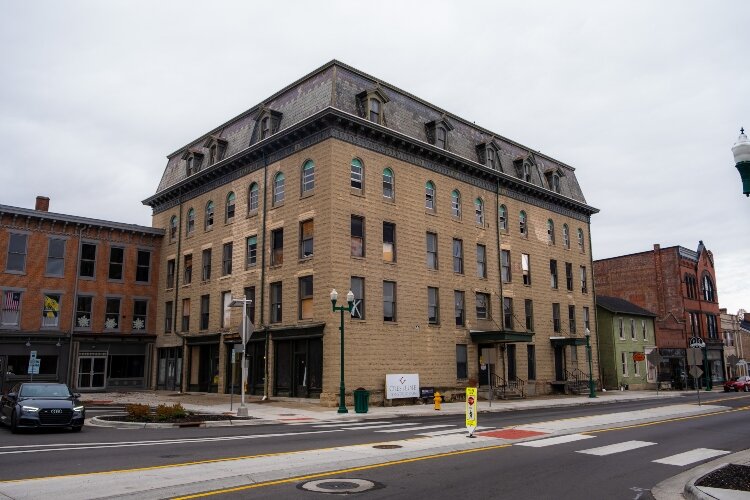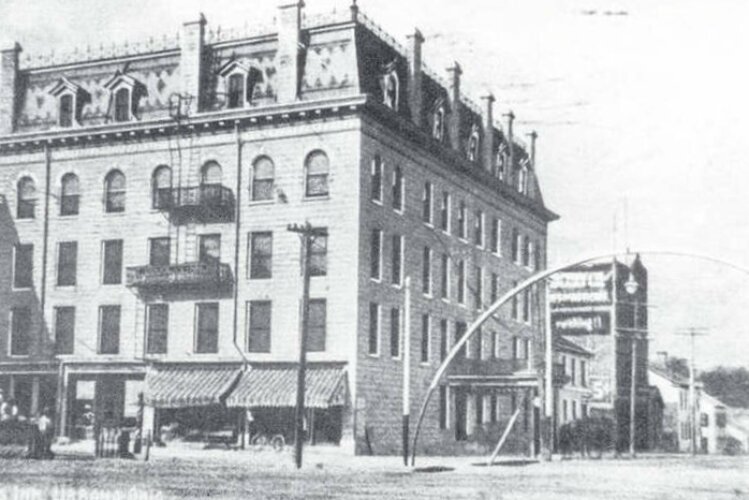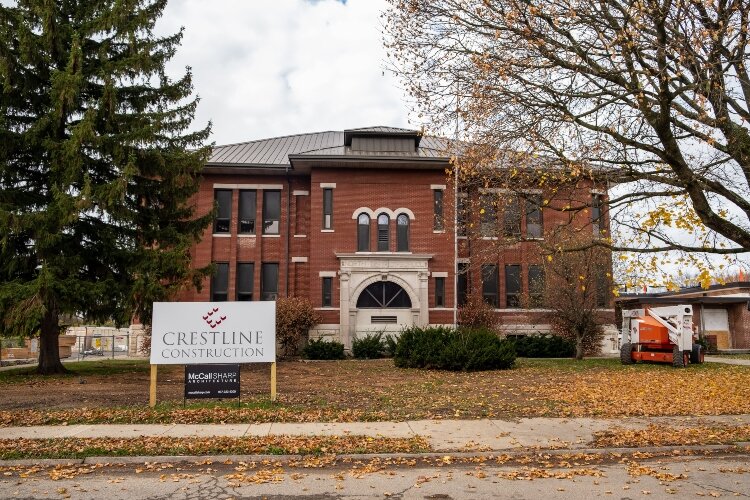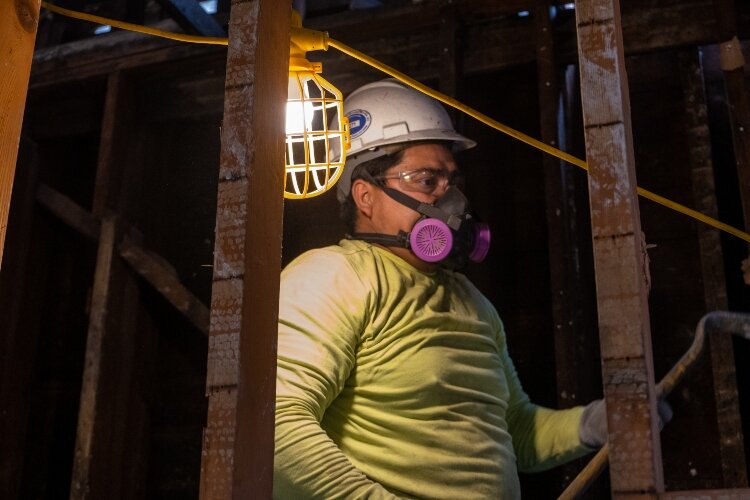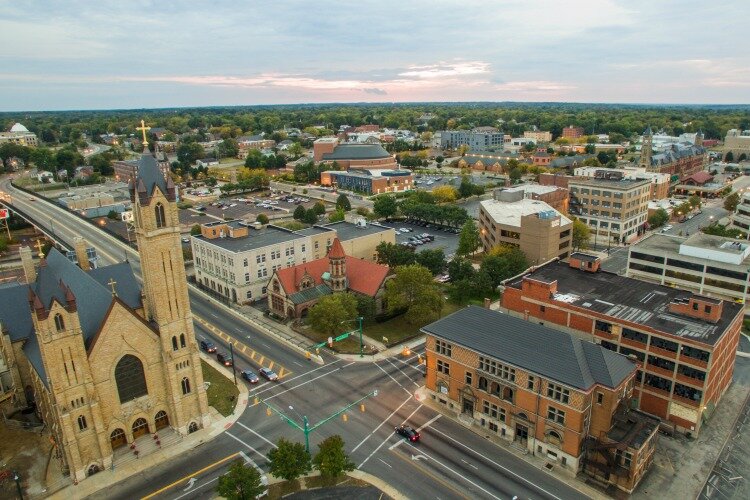Douglas Hotel and North, South Elementary buildings to become senior housing
After years of sitting vacant, the historic Douglas Hotel and former North and South Elementary buildings in Urbana will soon provide affordable senior living spaces.
The Douglas Hotel building has been a stable of the scenery of downtown Urbana in one form or another for almost 200 years.
And now, after more than a decade of sitting empty and much debate among community leaders through the years about what to do with the historical structure, the Douglas Hotel is prepping for a new chapter.
The Douglas Hotel and the former North and South Elementary Schools are part of a collective renovation project to save the historic buildings and transform them into affordable senior living options.
It all started with some local leaders reaching out to Duane Miller, the president of F&C Legacy Place – a branch of Flaherty & Collins Properties – and a developer who has dedicated much of his career to saving and renovating historical buildings across the country.
“I look for these kinds of historic projects,” says Indiana-based Miller. “It all started from a lead that there were some historic buildings that needed saving in Ohio.”
Conversations led to many meetings between Miller, Flaherty & Collins, the City of Urbana, the Champaign Economic Partnership (CEP), Urbana City Schools‘ administration and board of education, and Resident Supports and Services, Inc. (RSSI), which is a local non-profit that provides housing for seniors and adults with developmental disabilities.
The 17 units that are being built within the Douglas Hotel weren’t enough to secure the funding Miller wanted for the project. So he began looking to include the former North and South Elementary buildings as well.
With another 24 housing units to be available between the two schools, Miller says the total of 51 units was more of the scale of what he was hoping for to get the project off the ground.
Though shutdowns because of the COVID-19 pandemic caused some delays in processing paperwork and funding early this year, Miller says the community-focused group of supporters pushed forward. The project was able to secure $13 million in financing, including federal and state Historic Tax credits, low income housing credits, an Ohio Housing Finance Agency loan, and a construction loan.
“That’s really how this got pulled off,” Miller says. “This is totally a community effort – kudos to all those who were involved in helping.”
CEP Executive Director Marcia Bailey says she almost had to pinch herself when work officially started on the buildings because it was like a dream come true after so many years of collaboration and work to get the project started.
“Today, it looks like ‘ants’ in every building,” Bailey says. “There are construction crews in there, and you can see where they’re working from outside by building by the different lights on in different windows every day.”
Bailey says that though people driving through downtown Urbana won’t see much of a difference outside the building’s front, that behind the building is full of crews working hard to make all the updates to the interior.
“The Douglas Hotel was the anchor of the Southwest corner of downtown,” she says. “Some thought it should be torn down and others wanted to save it because of it’s history. This is the perfect mix of both; it will be revitalized into something new.
“The building finally is going to be use. It’s going to be a beautiful building again and not an eyesore with boarded up windows. Just that ambiance of what it’s going to look like, let alone the income that’s going to be generated in the downtown by the merchants – it’s going to be huge.”
With more updates to be done to the Douglas Hotel than to either school building, Miller says the plan is for renovations to the school to wrap up in May and for the Douglas living spaces to be ready by the end of 2021.
He says lease options will open about 90 days before each project’s completion.
One of the things both Bailey and Miller say is most exciting about the projects is the uniqueness that will be offered in each unit.
Because the buildings are pre-existing and historic, there won’t be any “cookie cutter” designs. Units will be different sizes with different layouts and designs.
And, some special historic features will be left in the buildings so the flavor of what makes them historic won’t be lost.
For example, many of the chalkboards in the school buildings will stay in place and be built into the new living units.
Also in the school buildings, the stages and gyms will remain as open community spaces where residents can dance, play bingo, or possibly even watch youth performances. Miller says he’s working with the Champaign Family YMCA to find possible programming and education opportunities.
“We want to build that community environment,” he says. “You want to create that family and that community feeling.”
Though Miller himself isn’t from Urbana, he wanted to ensure that the buildings stay meaningful and useful for people locally. He wants them to be a part of the community, and he says the investment from local individuals has been key to the entire project.
“To their credit, to their teams’ credit – not every community gets in and do what they do,” Miller says. “You need those ‘boots on the ground’ people who care and really get it. You can’t just pull this off just being a developer. You need to be a developer who plugs into the community and gets support – and that’s just what happened here.”

